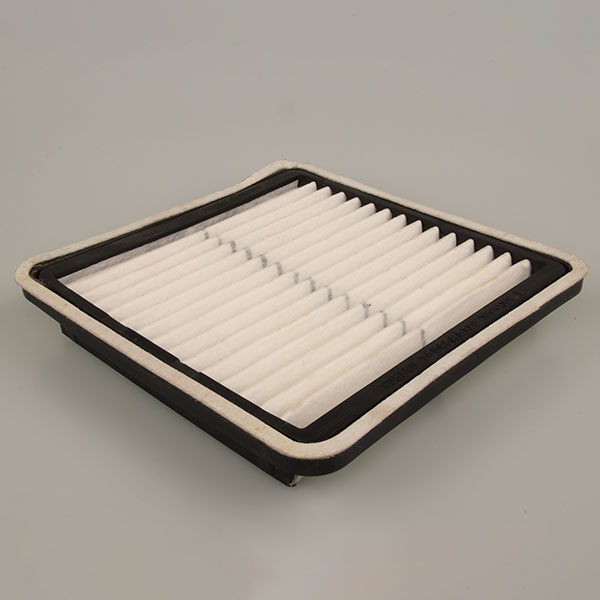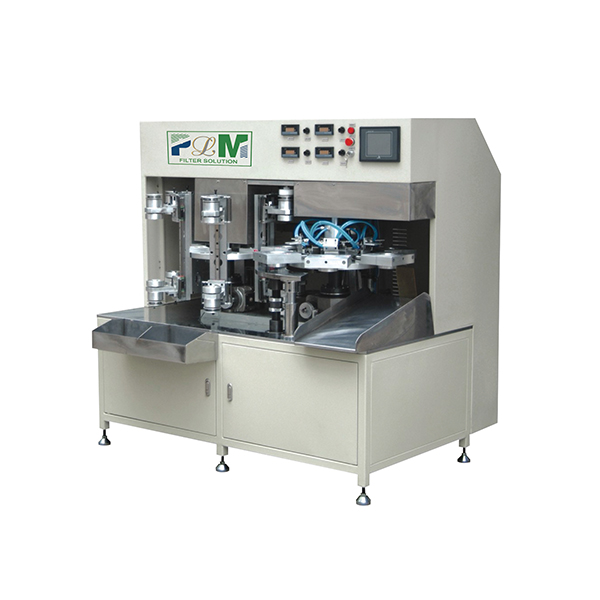There has been long-standing confusion over how to dispose of tea bags and whether or not they should go in the food waste bin. As the industry continues to transition from plastics to bioplastics, the answer is not so simple.
Tea: Britain's favourite drink. Second only to water. As a nation we consume 100 million bags of tea each day - that's a lot of cuppas and a lot of used bags to deal with. But does anyone really think about what happens to their tea bag once it's been dunked and dumped? Filter Caps

Most people wouldn’t consider their tea bags plastic – after all, they look like plain old paper and leaves – but many are actually sealed shut with plastic fibres that can make up nearly 25 per cent of each bag’s weight.
All ‘round’, ‘pyramid’ and ‘pillow’ tea bags have to be heat-pressed into their unique shapes. During this process, plastic fibres embedded in the outer layers of each bag melt and fuse together, forming a seal. In the past, the material used for this purpose was a non-biodegradable plastic called Polypropylene (PP).
Because of the nature of the seal, PP fibres cannot be easily separated from the organic materials in the rest of the bag, making them difficult to dispose of separately.
Recent awareness around the potential effects of microplastic pollution on the environment, and on ourselves, has led to some major brands turning to a new, biodegradable alternative: Polylactic Acid (PLA) – a bioplastic derived from corn.
Major brands like Tetley, PG Tips, Yorkshire Tea and Twinings all now use PLA-sealed bags in their best-selling ranges of teas. With its recent switch to PLA, PG tips alone claims to have saved 330 tonnes of ‘traditional plastic’ from entering the waste stream each year, plastic that might otherwise have ended up in British soils.
The question is, with both PLA and PP fibres still on the market, how should the consumer be disposing of their bags of tea? And what, if any, are the effects of these plastics, plant-based or otherwise, on our food waste streams?
PLA-sealed bags are sometimes labelled ‘plant-based’, ‘biodegradable’ or even ‘plastic-free’, but this can be misleading. PLA might be derived from plant matter but it’s still fundamentally a plastic. Sugars from corn, sugar cane and other agricultural products are fermented to form the lactic acid monomers that are the building blocks of the polymer itself. It’s not made from petrochemicals, but PLA will still stick around for a long time under natural conditions. There’s even some evidence to suggest that littered bioplastics could have a stronger effect than conventional ones on the quality of soil.
The great advantage PLA does have is that it can be broken down in industrial conditions and metabolised by microorganisms, leaving no contaminants behind in the soil.
PLA bags are designed to be disposed of through organic waste collections. They can’t be composted domestically, and it may take 100 years for one per cent of the PLA sent to landfill to degrade. Only in the warm, wet, microbe-rich environment of an industrial composter can PLA break down properly. Here, in the heat and humidity of the reactor, the polymer splits into smaller components before being eaten up by microorganisms.
In many ways the switch to PLA is a uniquely elegant solution for tea bags: most people already throw their tea bags in the food waste and most bags already end up in anaerobic digesters and industrial composting facilities. Neither consumer behaviour, nor waste-stream infrastructure needs to change to take advantage of the technology, and the small amounts of PLA present in the bags break down quickly under the normal operating conditions of an industrial composter.
Whilst treatment of PLA tea bags as part of the food waste stream is the preferred route, not everyone in the UK has access to food waste collection, which is available in just under a third of England’s local councils and unitary authorities, although the government plans to cover every house by 2025. Until then, the refuse bin may be the simplest solution for those without coverage.
The switch to PLA has sped up since Clipper put its first ‘plant-based’ bags on the market in 2018, but there are still plenty of traditional PP-sealed products on the market today. The transition between materials is not seamless, and manufacturers are having to build modified presses to work with the new bioplastics in their seals. Even large brands like Twinings and Tetley that have adopted PLA in their flagship products still use PP-sealed bags in parts of their ranges – their less popular ‘specialty’ teas – and don’t yet have the presses they need to seal these bags with PLA.
While the transition continues, PP from some other brands and from these smaller ranges will continue to enter the organic waste stream, albeit in smaller and smaller amounts. Once collected as part of food or garden waste (as recommended by RecycleNow), the tea and paper in these bags are broken down in industrial facilities to produce a ‘digestate’ leaving the PP seal behind to break into smaller fibres or remain in the form of a plastic ‘skeleton’. This product is then sieved and checked for contaminants as part of a routine quality control called a PAS test.
The problem is that these fibres cannot all be filtered out during the PAS process. They are small and flexible, and even undegraded seals may simply fold through the 2mm screen. Once they’re through they can be hard to spot.
In 2018, while PP seals still dominated the market, Resource spoke to Charlie Trousdell, a waste resource energy consultant and then chair of the Organics Recycling Group, about the disposal of PP tea bags, and he stated: “Since they are fibres – we are talking a few microns thick here – they will not lead to a PAS failure or even be that visible during inspection so it is hard to know their fate in the soil.”
Any PP fibres left behind by the PAS screening process would be mixed into the digestate and become contaminants. While the concentrations of PP entering the soil this way might be small they could still bring about negative repercussions. There is even research to suggest that PP microfibers, once present in soil, can have adverse effects on physical properties such as bulk density, aggregate stability and water retention capacities.
Perhaps because of this, the UK Tea & Herbals Association, cited by Tetley, recommends either throwing PP-sealed bags into landfill (contributing to methane emissions) or, if you have a garden compost, tearing open the bags, composting the leaves and throwing the rest away in the general waste – an unlikely solution on account of the UK’s low home-composting rates. According to a BusinessWaste survey of 2015 UK households, only three per cent had compost heaps or bins in their gardens.
WRAP gives different recommendations, saying all teabags should be placed in food or garden waste collections ‘to help prevent greenhouse gas emissions from teabags rotting down in landfill’.
Ultimately, consumers would be hard-pressed to know for sure what their tea bags are made from at the point of purchase and, while brands continue their transition towards PLA-based seals, it may be better to have what is now becoming a smaller and smaller amount of plastic going into compost than to have all those tea bags producing methane in UK landfills.
Compostable bioplastic seals are certainly a step in the right direction, but some providers, like Pukka, Hampstead Tea and Neil’s Yard Tea, have cut out plastic entirely – they all make their bags with wood pulp and plant cellulose, sealing them bags with either staples or cotton stitches that make them fully compostable. If you want to avoid microplastics in your compost or tea, these brands might be for you. But there has always been one surefire way to keep plastics out of your tea: no bag at all – the traditional teapot and strainer method, which comes in all manner of different infusers and inbuilt strainers, making it a more convenient option when throwing away pesky leaves. Loose leaf alternatives are available already in most supermarkets and are often better quality. Not to mention, if you went bagless, you would have the blessing of George Orwell – that other great authority on tea-making – who instructed in his 1946 essay A Nice Cup of Tea: “The tea should be put straight into the pot. No strainers, muslin bags or other devices to imprison the tea."
Two new public drinking fountains have been installed in Bury, Greater Manchester, in a bid to reduce plastic pollution and encourage the uptake of free drinking water.
Environmental consultancy Eunomia Research & Consulting has been appointed by the European Commission to run a study investigating how to reduce the effects of microplastics escaping into the oceans.
Scottish Environment Secretary Roseanna Cunningham has revealed that the Scottish Government is seeking to introduce a ban on plastic straws by the end of 2019.
The European Commission has proposed a full ban on some of the most commonly used and littered disposable plastic products in Europe, including single-use cutlery, plates, drinks stirrers, straws, cotton buds and sticks for balloons.
With awareness growing of the amount of plastic littering our seas, what happens when the material enters the food web, and how does it effect what ends up on our dinner tables?
A DS Smith report has highlighted that paper recycling rates could continue to decline without separate collections for paper and card
An innovative communication programme on metal packaging recycling has inspired an increase in local recycling rates in Suffolk
New research conducted by EA Earth Action has revealed the scale of ocean pollution that occurs from plastic additives each year
The businesses face legal action over claims made on plastic bottles sold across Europe
Reconomy, through its brand Valpak, has acquired Ecosurety’s WEEE and batteries compliance schemes

Japanese Car Air Filter Machine © 2000 - 2023 Resource Media Limited